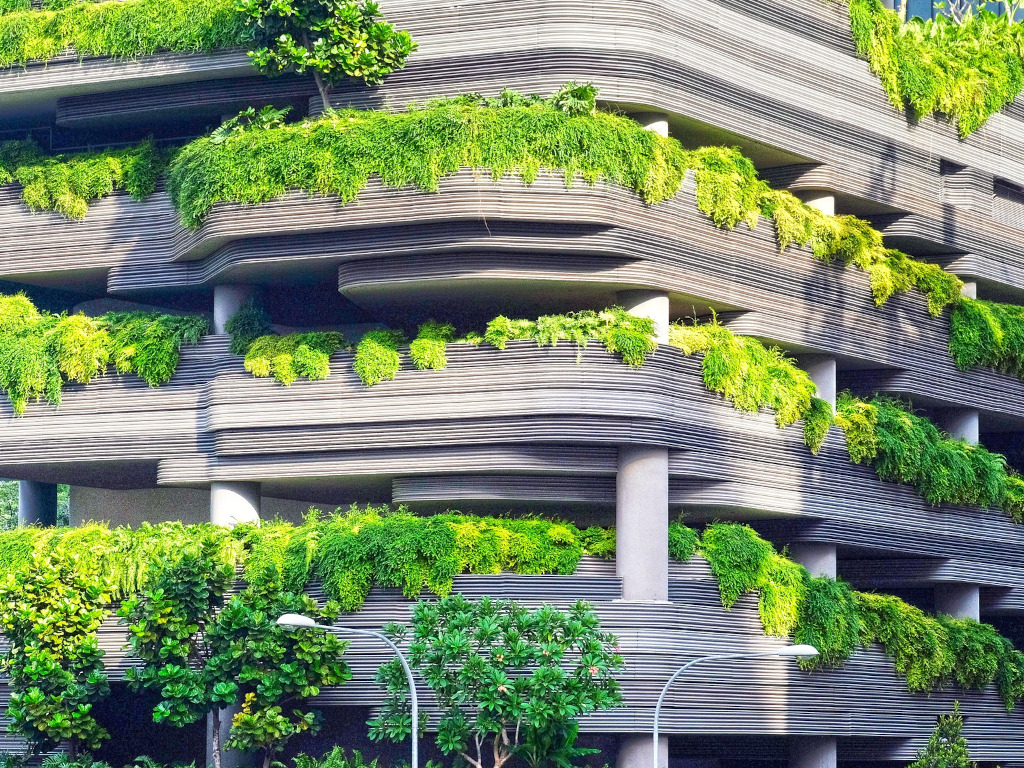Everything is Allowed in Modern Architecture – Multifunctional Spaces as Foundation for City Development
Source: eKapija
 Wednesday, 20.10.2021.
Wednesday, 20.10.2021.
 12:46
12:46
 Wednesday, 20.10.2021.
Wednesday, 20.10.2021.
 12:46
12:46
Illustration (Photo: Free-Photos from Pixabay)

– The only common denominator, as a rule, can be characterized as economic, which often results in neglecting social aspects of architecture and inevitably leads to its cultural banalization. On the other hand, there are attempt to change, so to say, the overall image of the dominant trend of building through certain facilities, by insisting on their “iconicity”, which is more down to the need for marketing than it is a reflection of the true situation in the architectural scene – Ignjatovic says.
The current practice in Belgrade, according to him, does not diverge considerably from the prevailing trends, at least not compared to the immediate surroundings.
– If we are looking at the cultural-economic space of Serbia, we can see that the dominant investment cycle is dictated by private interests, with the lack of significant public projects, so it’s no wonder that the current projects are mostly oriented to apartment building and, to a lesser extent, the business. In this sphere, authors face the situation where they have to harmonize their concepts with relatively limited program and economic resources, forever seeking a balance between the “justification of the features” and the always present desire for profit – he believes.
He adds that the change of the manner of investments and what the market dictates have led to a reduction of the process of experimenting and exploring and that the increasingly short deadlines have also led to the inevitable simplification in the whole designing process.
– Even with this kind of a dominant approach, there are realizations which “push the boundaries”, whether through their concept or materialization, pointing to the vitality of the profession – our interviewee emphasizes.
Energy efficiency – new/old demand
According to Ignjatovic, energy efficiency was implemented, that is, re-implemented as a principle back in 2011, because, in these areas, in the 1980s, we had very good regulations when it comes to construction physics.
– The crisis and the wars of the 1990s led to a stagnation of development and, even worse, to the fact that the existing laws and bylaws were not being enforced, which resulted in substandard realizations, especially in the private investment segment. If we add to this phenomenon the large number of so-called “illegal” facilities, it’s no wonder that the issues within the segment of energy efficiency came back to the focus of the interest of both the profession and the public in the context of the increase of the price of energy sources and the necessity of the implementation of modern regulations – Ignjatovic says.
In the process of accession to the EU, Serbia has taken a number of directives and, in line with them, started amending and modernizing its laws and bylaws. Within this cycle, adequate rulebooks were formed, which regulate the field of energy efficiency, both in the designing process and the verification of the performances through the issuing of the so-called “energy passports”.
– Although it was first believed that the stricter regulations and the thoroughness of the calculations, where the overall performances of buildings are observed and calculated throughout the year, will lead to a decrease in investments in construction, we can see that this is not so. Not only has there not been a halt in investments, but today the calculation of energy performances of buildings is a standard part of the project documentation, which is very successfully prepared, guaranteeing, at least in the designing phase, that the facility is harmonized with the proscribed norms – he says.
Although the prices of apartments and office space are growing, they, according to our interviewee, are followed by the relatively standard solutions, and very few facilities aim to push the boundaries toward higher levels of efficiency and comfort. This, he adds, is also down to the way the heating is charged, which is still calculated per square meter in most cases, so investors are not really interested in reaching higher standards which increase the price of the investment, while not providing benefits during the exploitation.
– As in the field of design, there are praiseworthy examples here too, which, from the primary concept to the materialization and the applied technical and technological solutions, include modern postulates of energy efficiency, resulting in so-called “E+” houses, that is, facilities which produce more energy than they spend – Ignjatovic notes.
Multifunctional spaces as foundation for city development
Observing the so-called “life cycle” of a facility, ever since the period of modernism, in the early 20th century, architects have been trying to provide answers to complex questions which have to do with aspects of permanence in correlation with the constantly changing demands from the users, designing architecture for “the new man”.
– If we know that our realizations have a minimum expected life cycle of 60 years, we need to assume that, in that period, significant changes will occur, both in the structure of the users (organizational, age, functional…) and the available technology that is required to support one such facility. Wider concepts of flexibility begin with the primary idea which defines the form-structure-equipment-materialization relations, where, within the project task already the idea of the changeability is clearly defined as the basis for the future multifunctionality. Such facilities are now the foundation of the development of cities, because they connect various, until recently clearly separate, functions, which has as its consequence an increase in efficiency, but also a social homogenization of the society and the revitalization of cities – he points out.
On the other hand, Ignjatovic adds, cities are not raised on empty spaces, where we are entirely free to implement new concepts.
– The treatment of the existing building environment, which was made by some other postulates and which, due to its economic, symbolic, material and ecological characteristics, needs to be preserved and adapted to the new demands, is a special kind of a challenge. As a rule, there are two approaches: the processes where investors often decide to remove the facilities and build new ones, even in those cases when this is in fact not necessary, and the revitalization, where the existing facility is used as the premise for a new development, in other words, becoming a part of the modern features based on the transformation of the primarily formal and, especially, symbolic significance. This second approach could be considered desirable in the context of the desire for the preservation of the cultural identity and collective memory, regardless of the time period of its formation.
Illustration (Photo: Pixabay/Free-Photos)

Recycling as one of “3R” postulates
Recycling, as one of the “3R” (reduce, reuse, recycle) design postulates is now a nearly standard concept, which, in the context of the development of environmental awareness, should become part of everyday practice.
– Construction is characterized as an activity which, in nearly all its segments, has very negative connotations when it comes to the environment, from taking up free space, through its activation (construction), use, changes, and finally, the demolition and the disposal. It is therefore no wonder that the idea of recycling is related to nearly all aspects of this process.
“The most ecological building is the one that doesn’t have to be raised”, our interviewee points out, so, if something can be reused, in a more or less unchanged (improved) state, it has considerable advantages over “new” construction.
– If we have chosen that kind of a process, we are naturally inclined to use materials and products with a certain percentage of recycled components, especially if we adhere to the theories of green building and certification. In other words, recycling almost goes without saying. Although, today, we see it as a kind of a lifestyle almost and a way of everyday behavior, in the field of construction materials, it entails an exact technological procedure, where the so-called recycled content in a new product or material is expressed as a percentage. Almost as a rule, big companies advertise themselves as environmentally aware, emphasizing the role of recycling in their production process, whereas smaller ones do not always do so.
The situation in the market, he believes, varies and is up to the conscience of the investors, designers and construction companies, as there is no regulation that would define things otherwise.
Building material price increase and change of trends in design and construction
A direct link between the price of certain building materials and trends in construction, according to our interviewee, can only be established in exclusive realizations which occur as a result of the latest technological achievements.
The facilities where such materials are implemented are, as a rule, unique, designed as vanguards of philosophical and designing ideas supported by the process of materialization.
– In everyday practice, as a rule, a relatively small range of building materials are used, which are standardized solutions, proven in their categories and when it comes to the manner of installation, permanence and the formal impression, that is, appearance. If we analyze the structural elements of modern facilities, we can see that an all-encompassing simplification is taking place, so both single-floor facilities and those with twenty floors are built using the same technology and with nearly the same materials. The reduction of technological variety as a consequence of a limited investment field and the disappearance of the domestic construction industry leads to the restriction of the varieties of the potential architectural expression, reducing the design to a formal range of façade shaping solutions – the main carrier of the symbolic quality. In other words, without the freedom of design, which is based on an aware procuring entity (private or public), supported by the construction industry, there is no essential progress or creation of new trends – Ignjatovic concludes.
Tags:
Union of Architects of Serbia
Association of Belgrade Architects
Dušan Ignjatović
trends in architecture
energy efficiency
eKapija special edition newsletter
special edition newsletter Real Estate and Construction Demand for Squares Drives New Investments
Comments
Your comment
Most Important News
Full information is available only to commercial users-subscribers and it is necessary to log in.
Follow the news, tenders, grants, legal regulations and reports on our portal.
Registracija na eKapiji vam omogućava pristup potpunim informacijama i dnevnom biltenu
Naš dnevni ekonomski bilten će stizati na vašu mejl adresu krajem svakog radnog dana. Bilteni su personalizovani prema interesovanjima svakog korisnika zasebno,
uz konsultacije sa našim ekspertima.


 Izdanje Srbija
Izdanje Srbija Serbische Ausgabe
Serbische Ausgabe Izdanje BiH
Izdanje BiH Izdanje Crna Gora
Izdanje Crna Gora


 News
News














